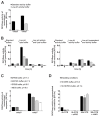Apoptotic Caspases-3 and -7 Cleave Extracellular Domains of Membrane-Bound Proteins from MDA-MB-231 Breast Cancer Cells
- PMID: 40331965
- PMCID: PMC12026882
- DOI: 10.3390/ijms26083466
Apoptotic Caspases-3 and -7 Cleave Extracellular Domains of Membrane-Bound Proteins from MDA-MB-231 Breast Cancer Cells
Abstract
Apoptotic executioner caspases-3 and -7 are the main proteases responsible for the execution of apoptosis. Apoptosis is the main form of programmed cell death involved in organism development and maintenance of homeostasis and is commonly impaired in various pathologies. Predominately an immunologically silent form of cell death, it can become immunogenic upon loss of membrane integrity during progression to secondary necrosis, which mostly occurs when apoptotic bodies are not efficiently cleared by efferocytosis. In cancer, the efferocytic capacity can be overwhelmed following chemotherapeutic treatment, thereby providing an opportunity for the potential extracellular functions of executioner apoptotic caspases in the tumor microenvironment. By triggering apoptosis in Jurkat E6.1 acute T cell leukemia cells, we demonstrated that during progression to secondary necrosis, executioner caspases-3 and -7 can be found in the extracellular space. Furthermore, we showed that extracellularly active caspases-3 and -7 can cleave extracellular domains of membrane-bound proteins from MDA-MB-231 breast cancer cells, a function generally executed in the tumor microenvironment by several extracellular proteases from metalloprotease and cathepsin families. As such, this study provides the evidence for the potential involvement of apoptotic caspases-3 and -7 in extracellular proteolytic networks. Presented mass spectrometry data are available via ProteomeXchange with identifier PXD061399.
Keywords: apoptotic caspases; cancer cells; ectodomain shedding; extracellular activity; membrane-bound proteins.
Conflict of interest statement
The authors declare no conflicts of interest.
Figures






Similar articles
-
Clostridioides difficile toxin B alone and with pro-inflammatory cytokines induces apoptosis in enteric glial cells by activating three different signalling pathways mediated by caspases, calpains and cathepsin B.Cell Mol Life Sci. 2022 Jul 22;79(8):442. doi: 10.1007/s00018-022-04459-z. Cell Mol Life Sci. 2022. PMID: 35864342 Free PMC article.
-
Oxyresveratrol drives caspase-independent apoptosis-like cell death in MDA-MB-231 breast cancer cells through the induction of ROS.Biochem Pharmacol. 2020 Mar;173:113724. doi: 10.1016/j.bcp.2019.113724. Epub 2019 Nov 20. Biochem Pharmacol. 2020. PMID: 31756327
-
Adeno-associated virus type 2 infection activates caspase dependent and independent apoptosis in multiple breast cancer lines but not in normal mammary epithelial cells.Mol Cancer. 2011 Aug 9;10:97. doi: 10.1186/1476-4598-10-97. Mol Cancer. 2011. PMID: 21827643 Free PMC article.
-
Death and survival from executioner caspase activation.Semin Cell Dev Biol. 2024 Mar 15;156:66-73. doi: 10.1016/j.semcdb.2023.07.005. Epub 2023 Jul 18. Semin Cell Dev Biol. 2024. PMID: 37468421 Review.
-
Regulation of caspase activation in apoptosis: implications in pathogenesis and treatment of disease.Clin Exp Pharmacol Physiol. 1999 Apr;26(4):295-303. doi: 10.1046/j.1440-1681.1999.03031.x. Clin Exp Pharmacol Physiol. 1999. PMID: 10225139 Review.
References
MeSH terms
Substances
Grants and funding
LinkOut - more resources
Full Text Sources
Medical
Research Materials
Miscellaneous

